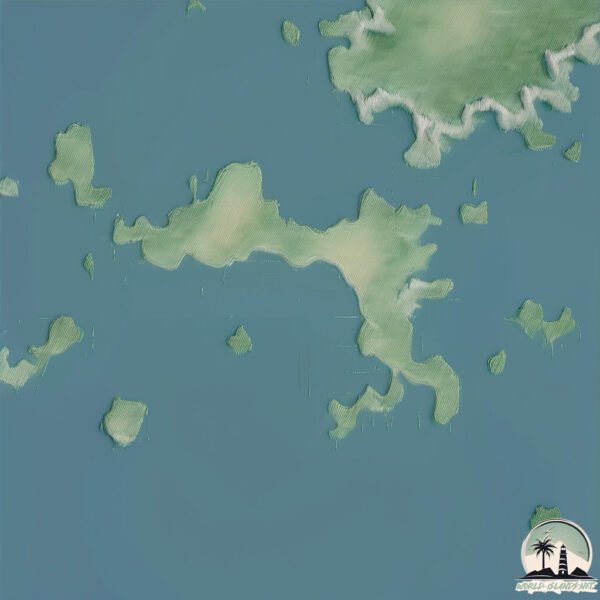Welcome to Gipoia , a Tropical island in the South Atlantic Ocean, part of the majestic Atlantic Ocean. This guide offers a comprehensive overview of what makes Gipoia unique – from its geography and climate to its population, infrastructure, and beyond. Dive into the details:
Geography and size of Gipoia
Size: 5.671 km²Coastline: 23 kmOcean: Atlantic OceanSea: South Atlantic OceanContinent: South America
Gipoia is a Small Island spanning 5.7 km² with a coastline of 23 km.
Archipel: –
Tectonic Plate: South America – A major plate covering the South American continent and part of the Atlantic Ocean, known for the Andes mountain range and significant seismic and volcanic activity.
The geographic heart of the island is pinpointed at these coordinates:
Climate and weather of Gipoia
Climate Zone: TropicalClimate Details: Tropical Monsoon ClimateTemperature: Hot
Climate Characteristics: Characterized by heavy rainfall, high humidity, and uniformly high temperatures, but with a distinct short dry season. It features a seasonal reversal of prevailing wind directions.
Topography and nature of Gipoia
Timezone: UTC-03:00Timezone places: America/Sao_PauloMax. Elevation: 136 m Mean Elevation: 81 mVegetation: Evergreen Broadleaf ForestTree Coverage: 100%
The mean elevation is 81 m. The highest elevation on the island reaches approximately 136 meters above sea level. The island is characterized by Plains: Flat, low-lying lands characterized by a maximum elevation of up to 200 meters. On islands, plains are typically coastal lowlands or central flat areas.
Dominating Vegetation: Evergreen Broadleaf Forest
Vegetation: 2 vegetation zones – Low Diversity Island
Infrastructure and Travelling to Gipoia
Does the island have a public airport? no .
Does the island have a major port? no .
The mean population of Gipoia is 36 per km². Gipoia is Gently Populated. The island belongs to Brazil .
Continuing your journey, Ilha da Marambaia is the next notable island, situated merely km away.
Brazilian Tropical Boat Tour - Ilha da Gipóia, Beautiful Beaches
Video Description: In this video I leave Ilha grande by a smaller boat to visit 4 beautiful spots around the area. The first location is ...
Brazilian Tropical Boat Tour - Ilha da Gipóia, Beautiful Beaches
Video Description: In this video I leave Ilha grande by a smaller boat ...
Video Description: In this video I leave Ilha grande by a smaller boat to visit 4 beautiful spots around the area. The first location is ...
Ilha Gipóia ►10 ATRATIVOS TURÍSTICOS
Angra dos Reis - Rio de Janeiro - Brasil. ▻10 Atrativos Turísticos ( ...
Angra dos Reis - Rio de Janeiro - Brasil. ▻10 Atrativos Turísticos ( Ilha Gipóia ) 01 - 00:00 - 02:01 - Praia da Fazenda 02 - 00:12 ...
Ilha da Gipoia - Angra dos Reis: praias do Tenório, Piedade e igrejinha , Vitorino .
dicas da ilha da Gipoia e suas praias . Nessa primeira parte vamos ...
dicas da ilha da Gipoia e suas praias . Nessa primeira parte vamos conhecer as praias do Tenório, praia da Piedade com sua ...
Brazil is classified as Emerging region: BRIC: Brazil, Russia, India, and China – Economies noted for their rapid growth and increasing influence on global affairs. The level of income is Upper middle income.
News – Latest Updates and Headlines from Gipoia
Stay informed with the most recent news and important headlines from Gipoia. Here’s a roundup of the latest developments.
Loading...
Please note: The data used here has been primarily extracted from satellite readings. Deviations from exact values may occur, particularly regarding the height of elevations and population density. Land area and coastline measurements refer to average values at mean high tide.

